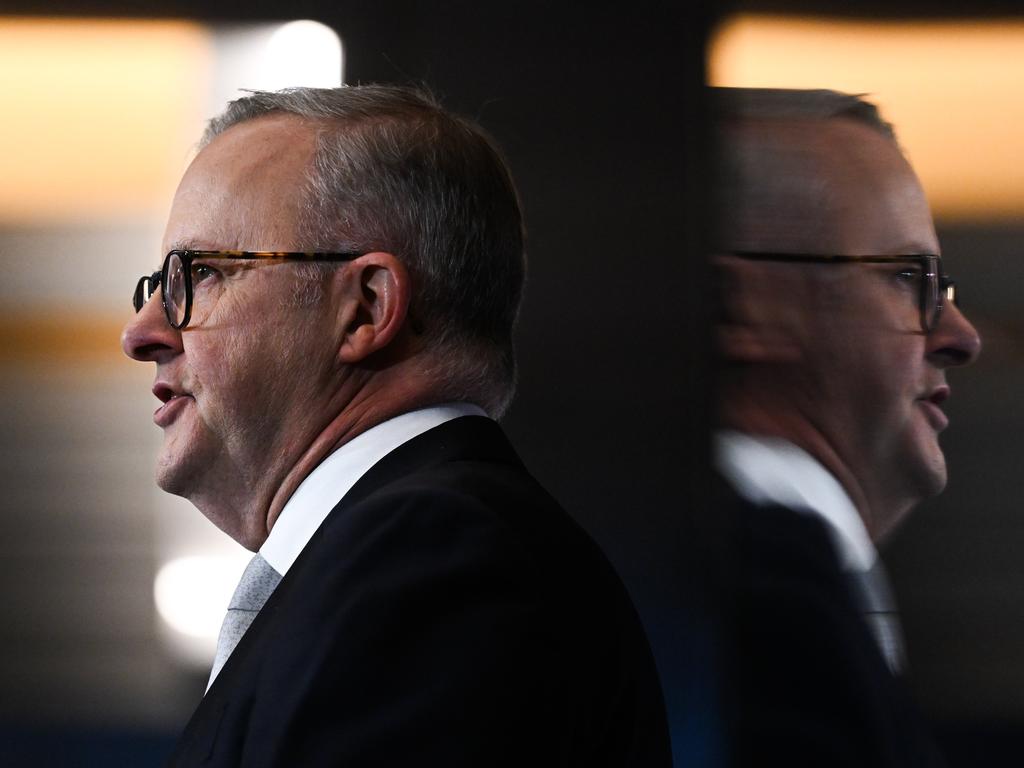This protectionist Ponzi scheme will only end in tears

This idea has been rightly panned by economists and commentators, including the government’s hand-picked head of the Productivity Commission, Danielle Wood. Jim Chalmers’ defence of the policy in this newspaper (“Nation’s security should be made here in Australia”, 1/5) will only confirm the worst fears of its critics.
This word salad, seasoned with his characteristic alliteration (“churn and change”, “fraught and fragile”) purports to provide a rigorous framework for support. It does the exact opposite.
The Treasurer claims the new protectionism is about “powering the future, not manufacturing the past”, but his repeated references to “better aligning our economic and security interests” could have been cut and pasted from the 1950s.
Indeed, the distinctive feature of A Future Made in Australia is its antiquated, retro feel. If there is one constant in Australian politics, it is the periodic re-emergence of protectionist thinking, from Alfred Deakin’s Australian settlement, to Ben Chifley’s dream of an Australian car industry and the 1965 Vernon report which, backed by protectionists in the bureaucracy including Sir John Crawford, called for an activist industry policy.
A Future Made in Australia is simply the latest attempt to put a new lyric (Australia as a renewable energy superpower, no less) to a familiar and discredited tune.
Chalmers has said he does not want to re-erect tariff walls but appears not to understand that protectionism is protectionism, regardless of how you dress it up.
The use of public grants and loans rather than the tariffs of the past makes no difference.
The aim is the same: to shift resources away from the activities that consumers and investors want to fund (with their decisions in competitive markets) in favour of those politicians and bureaucrats decide to place bets on.

Think for a moment about who will be making the decisions. Not economic oracles or philosopher kings but antipodean Jim Hackers and Humphrey Applebys. They may not be able to accurately forecast the next month’s inflation result, and designing an effective disability scheme so far has completely eluded them, but don’t worry, they alone have a crystal ball into the distant future.
When I first joined Treasury in 1999, I was trained to kill off or at least limit the damage of bad ideas coming from spending ministers. This was part of the department’s DNA, reflecting our adherence to a kind of Hippocratic oath: above all, do no harm to the taxpayer and broader economy. Treasurer Peter Costello expected nothing less of us. Any Treasury graduate would have made short work of A Future Made in Australia, seeing it as a blank cheque for policy folly.
Protectionism is about more than picking winners, however. By merging politics and the commercial world, it corrupts both. Politicians become speculative investors, fatally undermining their capacity to manage the economy in the public interest. Business people become lobbyists, focused more on the Canberra bubble than their customers and shareholders.
As a Treasury assistant secretary, I had years of direct exposure to this. Whenever a policy that promised to give away taxpayer funds was announced, no matter how modest in scope, my phone would start to ring, sometimes on the day of announcement. Lobbyists would leap into action, starting with the department and ending with ministers’ offices.

For an initiative as ambitious in scope as A Future Made in Australia, multiply the usual lobbying effort by a thousand and you’ll have an idea of what has been unleashed.
Protectionism is also a trap, a policy addiction that, once it takes hold, is almost impossible to reverse. We lived through this in the post-World War II era. Protectionism was intended to be limited, but as more sectors clamoured for and obtained assistance the malaise inevitably spread. As we know, it took decades of economic decline, the stagflation of the early 1970s and years of gradual tariff reductions from the early ’80s to free ourselves from protectionism’s hold.
Chalmers identifies five criteria for support under A Future Made in Australia.
First, can the industry “be competitive and more productive”? Second, does it contribute to net zero? Third, can it build the “capabilities of our people” and regions? Fourth, will it improve our “national security and resilience”? And fifth, does it “recognise the key role of the private sector and deliver value for money”?
A Future Made in Australia, for all its folly, is a response to a deeper policy mistake. By massively subsidising intermittent (and commercially unviable) electricity generation, we have not only undermined the economics of coal-fired power, necessitating subsidies for this as well, but also raised energy costs for local manufacturing, giving rise to further pleas for taxpayer support.
Instead of facing up to the root cause of the problem, we paper over the cracks, piling subsidy upon subsidy in a Ponzi scheme that can end only one way.


I can’t help wonder what advice my former department, Treasury, provided ministers on this latest protectionist romp. In 1965, the Treasury of secretary Roland Wilson and John Stone famously shot down (in a devastating series of cabinet submissions) the interventionist industry policy proposed in the Vernon report, convincing Bob Menzies to reject it outright.
Did Treasury wave through A Future Made in Australia? Or did the government not listen to its advice? The Prime Minister and the Treasurer are right about one thing. They admit that in the pursuit of their vision, the government must take on more risk. While risks will indeed be taken, it is not the government that will bear them but Australia’s long-suffering taxpayers. It is they, not Mike Cannon-Brookes or Andrew Forrest, who will be on the hook when this policy adventure turns sour, as it surely will.
The government is betting the house on global net zero, but this utopian vision has never been embraced by China and India, which continue to roll out coal-fired power stations, and even in Europe political resistance to it is gaining momentum. And of course under a Donald Trump presidency, should he be elected, the US would very likely pull out of the Paris climate change agreement.
What should the government do? If it unwinds its Greta Thunberg-inspired energy policies and, for good measure, scraps its Jurassic-era industrial relations changes, it may yet make life bearable for those who want to make things in Australia. Not in some green utopian future but today and tomorrow.
David Pearl is a former Treasury assistant secretary.
More Coverage
 This idea has been rightly panned by economists and commentators, including the government’s hand-picked head of the Productivity Commission
This idea has been rightly panned by economists and commentators, including the government’s hand-picked head of the Productivity Commission





If patriotism is the last refuge of the scoundrel, protectionism is the last resort of desperate governments. Anthony Albanese’s A Future Made in Australia initiative, under which billions of taxpayer dollars will be lent to corporate chancers, should be renamed A Future Made in a Focus Group.